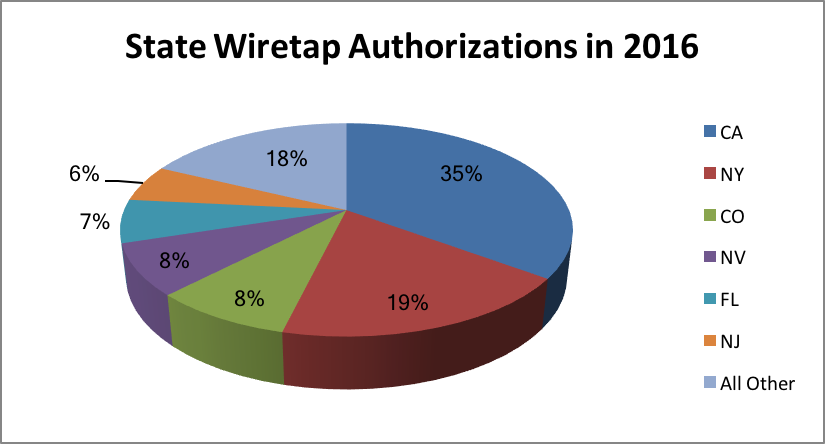Primer: Try performing an internet search of any of the names below as an introduction to their own individual scandals. Two congressional committees are assigned to this bill, they are the House Rules Committee and the House Judiciary Sub-Committee on the Constitution and Civil Justice.
The Washington Post is ‘all-in’ on advancing this legislation and is likely aiding the committees with alleged facts, all yet to be proven true or accurate. This is tiresome and impedes the people’s business of that of representatives of the House…continuity of government and the transfer of power means nothing to these people. America suffers. Additionally, these democrats are using taxpayer dollars and legislative time to do this.
Further, there is already a lot of chatter inside the Beltway about the 25th Amendment. So, here it is for your use and reference.
25th Amendment
The 25th Amendment, proposed by Congress and ratified by the states in the aftermath of the assassination of President John F. Kennedy, provides the procedures for replacing the president or vice president in the event of death, removal, resignation, or incapacitation. The Watergate scandal of the 1970s saw the application of these procedures, first when Gerald Ford replaced Spiro Agnew as vice president, then when he replaced Richard Nixon as president, and then when Nelson Rockefeller filled the resulting vacancy to become the vice president. Read more from the Congressional Research Service here….
Amendment XXV
Section 1.
In case of the removal of the President from office or of his death or resignation, the Vice President shall become President.
Section 2.
Whenever there is a vacancy in the office of the Vice President, the President shall nominate a Vice President who shall take office upon confirmation by a majority vote of both Houses of Congress.
Section 3.
Whenever the President transmits to the President pro tempore of the Senate and the Speaker of the House of Representatives his written declaration that he is unable to discharge the powers and duties of his office, and until he transmits to them a written declaration to the contrary, such powers and duties shall be discharged by the Vice President as Acting President.
Section 4.
Whenever the Vice President and a majority of either the principal officers of the executive departments or of such other body as Congress may by law provide, transmit to the President pro tempore of the Senate and the Speaker of the House of Representatives their written declaration that the President is unable to discharge the powers and duties of his office, the Vice President shall immediately assume the powers and duties of the office as Acting President.
Thereafter, when the President transmits to the President pro tempore of the Senate and the Speaker of the House of Representatives his written declaration that no inability exists, he shall resume the powers and duties of his office unless the Vice President and a majority of either the principal officers of the executive department or of such other body as Congress may by law provide, transmit within four days to the President pro tempore of the Senate and the Speaker of the House of Representatives their written declaration that the President is unable to discharge the powers and duties of his office. Thereupon Congress shall decide the issue, assembling within forty-eight hours for that purpose if not in session. If the Congress, within twenty-one days after receipt of the latter written declaration, or, if Congress is not in session, within twenty-one days after Congress is required to assemble, determines by two-thirds vote of both Houses that the President is unable to discharge the powers and duties of his office, the Vice President shall continue to discharge the same as Acting President; otherwise, the President shall resume the powers and duties of his office.
H.R. 1987 was introduced in April and the co-sponsor list of signatories is growing:
Mr. Raskin (for himself, Mr. Conyers, Mr. McGovern, Ms. Lee, Ms. Jayapal, Mr. Blumenauer, Mr. Doggett, Mr. Soto, Ms. Jackson Lee, Mr. Cohen, Mr. Gutiérrez, Ms. Judy Chu of California, Mr. Grijalva, Ms. Lofgren, Mr. Brown of Maryland, Mr. Cicilline, Mr. Takano, Ms. Wasserman Schultz, Mr. Evans, and Mr. Nadler) introduced the following bill; which was referred to the Committee on the Judiciary, and in addition to the Committee on Rules, for a period to be subsequently determined by the Speaker, in each case for consideration of such provisions as fall within the jurisdiction of the committee concerned…
A BILLTo establish the Oversight Commission on Presidential Capacity, and for other purposes.
Be it enacted by the Senate and House of Representatives of the United States of America in Congress assembled,This Act may be cited as the “Oversight Commission on Presidential Capacity Act”.
There is established a commission in the legislative branch to be known as the “Oversight Commission on Presidential Capacity” (in this Act referred to as the “Commission”). The Commission shall serve as the body provided by law by Congress to carry out section 4 of the 25th Amendment to the Constitution of the United States.
(a) In general.—If directed by Congress pursuant to section 5, the Commission shall carry out a medical examination of the President to determine whether the President is mentally or physically unable to discharge the powers and duties of the office, as described under subsection (b).
(b) Determination.—The determination under subsection (a) shall be made if the Commission finds that the President is temporarily or permanently impaired by physical illness or disability, mental illness, mental deficiency, or alcohol or drug use to the extent that the person lacks sufficient understanding or capacity to execute the powers and duties of the office of President.
(a) Number and appointment.—The Commission shall be composed of 11 members, appointed as follows:
(1) Two members appointed by the majority leader of the Senate.
(2) Two members appointed by the minority leader of the Senate.
(3) Two members appointed by the Speaker of the House of Representatives.
(4) Two members appointed by the minority leader of the House of Representatives.
(A) one of whom is appointed jointly by the two appointing individuals under paragraphs (1) through (4) who are members of, or caucus with, the Democratic party;
(B) one of whom is appointed jointly by the two appointing individuals under paragraphs (1) through (4) who are members of, or caucus with, the Republican party; and
(C) each of whom has served as President, Vice President, Secretary of State, Attorney General, Secretary of the Treasury, Secretary of Defense, or Surgeon General.
(6) One member, to serve as Chair of the Commission, appointed by simple majority vote of the 10 members appointed under paragraphs (1) through (5).
(b) Criteria for appointment.—
(1) IN GENERAL.—Each member appointed to the Commission under paragraphs (1) through (4) of subsection (a) shall be a physician. Of the two members appointed by each individual under such paragraphs, one shall be a physician with a specialty in psychiatry. The Chair shall be either a physician or an individual appointed under paragraph (5) of subsection (a), or both.
(2) LIMITATIONS.—A member appointed under subsection (a) may not, at the time the member is appointed or serving as a member on the Commission, be—
(A) an elected official to any Federal, State, or local office;
(B) an employee (as that term is defined in section 2105 of title 5, United States Code, including any employee of the United States Postal Service or the Postal Regulatory Commission); or
(C) a member of the Armed Forces, including reserve components thereof.
(3) PHYSICIAN DEFINED.—In this subsection, the term “physician” means a doctor of medicine licensed to practice medicine, surgery, or osteopathy in a State.
(c) Travel expenses.—Each member shall receive travel expenses, including per diem in lieu of subsistence, in accordance with applicable provisions under subchapter I of chapter 57 of title 5, United States Code.
(1) IN GENERAL.—Each member shall be appointed for a term of 4 years. A member may serve after the expiration of that member’s term until a successor has taken office.
(2) APPOINTMENT.—Each member shall be appointed during the period beginning on the date that a Presidential election is held and ending on the date that is 30 days after such election date.
(3) VACANCIES.—A vacancy in the Commission shall be filled in the manner in which the original appointment was made, not later than 30 days after the vacancy occurs. Any member appointed to fill a vacancy occurring before the expiration of the term for which the member’s predecessor was appointed shall be appointed only for the remainder of that term.
SEC. 5. Examination of the President.
(a) In general.—A concurrent resolution described in this subsection is a concurrent resolution directing the Commission to conduct an examination of the President to determine whether the President is incapacitated, either mentally or physically, the title of which is “Directing the Oversight Commission on Presidential Capacity to conduct an examination of the President”, and the text of which consists solely of a directive to the Commission to conduct the examination.
(b) Procedures.—The provisions of section 2908 (other than subsection (a)) of the Defense Base Closure and Realignment Act of 1990 shall apply to the consideration of a concurrent resolution described in subsection (a) in the same manner as such provisions apply to a joint resolution described in section 2908(a) of such Act.
(c) Special rules.—For purposes of applying subsection (b) with respect to such provisions, the following rules shall apply:
(1) Any reference to the Committee on Armed Services of the House of Representatives shall be deemed a reference to the Committee on the Judiciary of the House of Representatives and any reference to the Committee on Armed Services of the Senate shall be deemed a reference to the Committee on the Judiciary of the Senate.
(2) Any reference in subsection (c) to a “20-day period” shall be deemed a reference to a “48-hour period”.
(3) Any reference in subsection (d) to “the third day” shall be deemed a reference to “the first day”.
(4) Any reference to the date on which the President transmits a report shall be deemed a reference to the date on which a Member of Congress introduced a concurrent resolution described in subsection (a).
(d) Examination.—Not later than 72 hours after the adoption by Congress of the concurrent resolution described in subsection (a), the Commission shall conduct the examination described under such subsection.
(a) In general.—Not later than 72 hours after completing the examination under section 4(d), and notwithstanding the HIPAA privacy regulations (as defined in section 1180(b)(3) of the Social Security Act (42 U.S.C. 1320d–9(b)(3))), the Commission shall submit a report to the Speaker of the House of Representatives and the President pro tempore of the Senate describing the findings and conclusions of the examination.
(b) Consideration.—Any refusal by the President to undergo such examination shall be taken into consideration by the Commission in reaching a conclusion in the report under subsection (a).

 NYTimes
NYTimes CNN
CNN
 USAToday
USAToday
